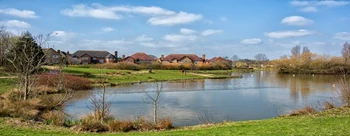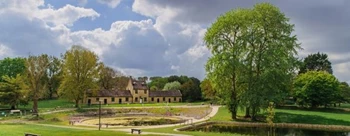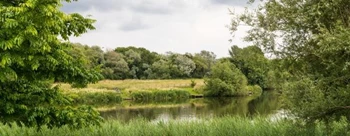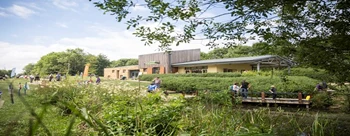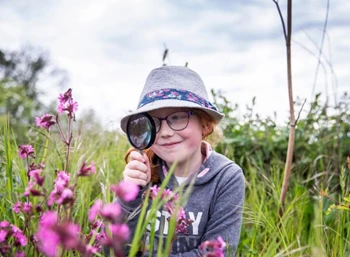Marking National Nest Box Week

Take a walk down any street with trees or to your local park, look up, and you are guaranteed to spot a bird’s nest. Although we might not pay much attention to a stack of twigs at first glance, nest building is a highly intricate process. Some view it as one of nature's oldest and underappreciated art forms.
Despite spotting them almost everywhere we go, sometimes our birds need a helping hand (or wing) to find the space in order to raise their chicks. This is why National Nest Box Week is celebrated every year. Coinciding with St Valentine’s Day, as birds begin to 'couple up', birding charities across the UK encourage people to install nest boxes. This provides a head start for the newly matched birds and their families.
Building a nest is no easy task and, in the shadow of human civilisation, is becoming more difficult with each passing year. Have you ever wondered what it takes to build a nest? Find out more below...
Why do birds build nests?
For the same reason that we build houses, birds need nests for shelter, security and a place to raise their young. However, some birds live in very densely packed colonies and therefore simply don’t have room for nests. Nest building is also not unique to birds. Mammals such as chimpanzees and the more local hazel dormouse, some species of frog, and even fish can build nests!
How do birds build nests?
Unlike humans, birds do not have thumbs so picking up nesting materials brings its own challenges. Birds do, however, have dexterous beaks and most have mobile toes that can be used to manipulate items. Birds will predominantly build their nests using natural materials including twigs, leaves, moss, feathers, mud, saliva and even spider’s webs! The process begins by dropping twigs onto the chosen branch and hoping that they become lodged until they have enough materials to weave. Eventually, the birds will begin to intricately twist and meticulously stick their nesting materials together – this is where the mud, saliva and webs come in.
There are many different ways to build a nest and many species of bird will have specific techniques and designs. Birds mainly learn from their parents and by watching other similar birds, while some develop their own methods by trial and error. Nests can be defined by their shape, materials and/or location. Many bird’s nests are so distinctive that scientists can identify which bird species lives there, simply by studying the nest. A fantastic way to see a range of nests in person is at our Howe Park Wood Open Mornings.

Great Crested Grebe Nesting at Lodge Lake
Where are nests built?
The last important factor for a bird to consider is where to build their nest. The nest should be safe from predators, have plenty of food nearby and be sheltered from the elements. However, if you have ever watched any nature documentary, you’ll know that this isn’t always possible! With over 600 bird species in the UK, space can often become an issue. Some birds will choose unsuitable spots for their nests simply because there isn’t enough room in an ideal spot.
The needs of the bird and its chicks will also differ based on how they spend their lives. For example, a barn owl needs a lot of space for its chicks, which get very large, so they choose to nest in hollowed-out trees, old barns and other similar structures. This choice offers protection from rain, which is crucial for owls lacking waterproof feathers. In contrast, a wader like the moorhen, not known for strong flight, prefers building nests from reeds and aquatic grasses along the water's edge.
Does every bird build a nest?
Not all birds need to build nests to survive. The Emperor penguin, for example, just pops its egg onto its feet and thousands of birds huddle together to keep both themselves and the eggs safe from winter storms. A more local example of extreme bird intelligence and “energy conservation” is the cuckoo. A common misconception is that cuckoos do not build their own nests. This is untrue, and some cuckoo species are known to even build communal nests for group protection. However, they are particularly famous for their tendency to lay their eggs in the nests of other birds! This technique allows the parent birds to save valuable energy and keep food for themselves. The chick will hatch before the other species’ eggs, tricking the unwitting parents into believing it is their own chick. In the meantime, the chick will push all other eggs out of the nest so that it reaps all the rewards of having the undivided attention of the adopted parent!
What can you do to help?
Throughout the year, birds will benefit from additional shelter. If you have available space, consider installing a nest box and following our tutorial on how to build one and where to place it. Go the extra mile by offering nutritious food seasonally, planting pollinator-attracting flowers (consumed by insect-eating birds), and providing a bird bath or water bowl. We also have a tutorial to support you on this by creating your own bird feeder!
We hope you have enjoyed learning a little more about the wonders of nest building. Let us know on social media by tagging @theparkstrust if you create your own nest box at home!





